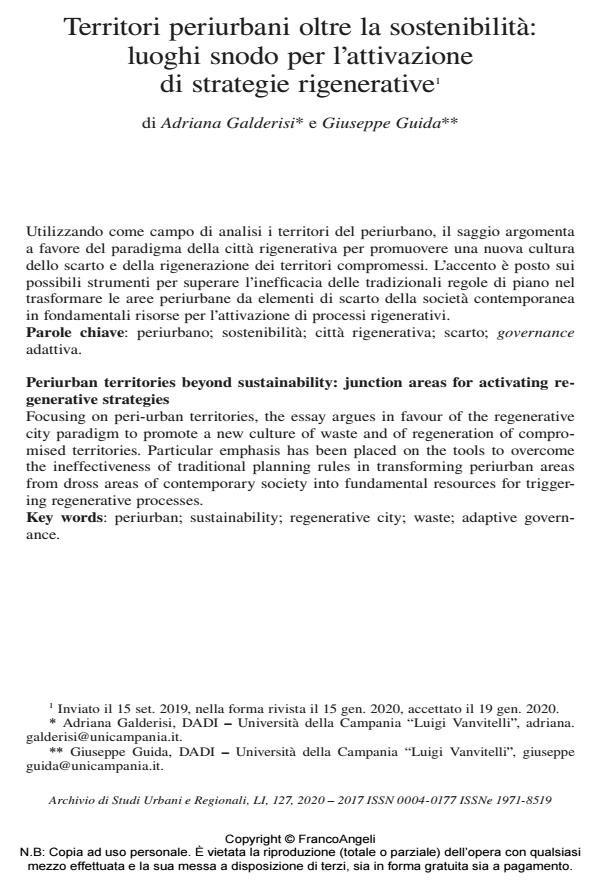Periurban territories beyond sustainability: junction areas for activating regenerative strategies
Journal title ARCHIVIO DI STUDI URBANI E REGIONALI
Author/s Adriana Galderisi, Giuseppe Guida
Publishing Year 2020 Issue 2020/127
Language Italian Pages 24 P. 72-95 File size 235 KB
DOI 10.3280/ASUR2020-127004
DOI is like a bar code for intellectual property: to have more infomation
click here
Below, you can see the article first page
If you want to buy this article in PDF format, you can do it, following the instructions to buy download credits

FrancoAngeli is member of Publishers International Linking Association, Inc (PILA), a not-for-profit association which run the CrossRef service enabling links to and from online scholarly content.
Focusing on peri-urban territories, the essay argues in favour of the regenerative city paradigm to promote a new culture of waste and of regeneration of compromised territories. Particular emphasis has been placed on the tools to overcome the ineffectiveness of traditional planning rules in transforming periurban areas from dross areas of contemporary society into fundamental resources for triggering regenerative processes. .
Keywords: Periurban; sustainability; regenerative city; waste; adaptive governance
Adriana Galderisi, Giuseppe Guida, Territori periurbani oltre la sostenibilità: luoghi snodo per l’attivazione di strategie rigenerative in "ARCHIVIO DI STUDI URBANI E REGIONALI" 127/2020, pp 72-95, DOI: 10.3280/ASUR2020-127004